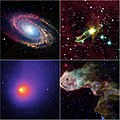Fichier:Ssc2003-06k 250.jpg

Gréisst vun dëser Duerstellung: 599 × 600 Pixel. Aner Opléisungen: 240 × 240 Pixel | 627 × 628 Pixel.
Original Fichier (627 × 628 Pixel, Fichiersgréisst: 97 KB, MIME-Typ: image/jpeg)
Versiounen
Klickt op e bestëmmten Zäitpunkt fir déi respektiv Versioun vum Fichier ze kucken.
| Versioun vum | Miniaturbild | Dimensiounen | Benotzer | Bemierkung | |
|---|---|---|---|---|---|
| aktuell | 22:06, 17. Jan. 2007 |  | 627 × 628 (97 KB) | Siebrand | {{Information |Description=<table border="1"> <tr><td>Image ID: ssc2003-06k</td><td>Release date: en:December 19, en:2003</td></tr> <tr><td colspan="2">Source: [http://www.spitzer.caltech.edu/Media/releases/ssc2003-06/ssc2003-06k.shtml Spitzer n |
Benotze vu Fichieren
Dës Säit benotzt dëse Fichier:
Globaalt Benotze vum Fichier
Dës aner Wikie benotzen dëse Fichier:
- Benotzt op af.wikipedia.org
- Benotzt op cs.wikipedia.org
- Benotzt op fa.wikipedia.org
- Benotzt op fr.wikipedia.org
- Benotzt op id.wikipedia.org
- Benotzt op ko.wikipedia.org
- Benotzt op nl.wikipedia.org
- Benotzt op ru.wikipedia.org
- Benotzt op sk.wikipedia.org

